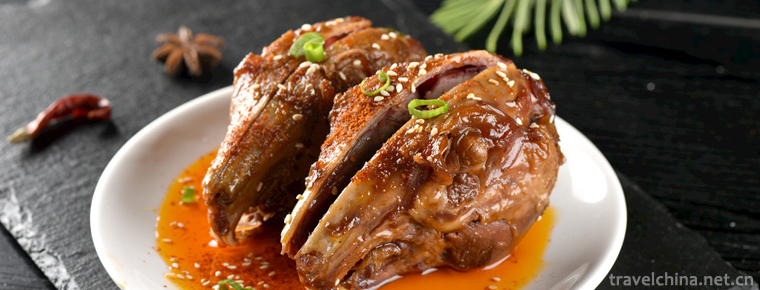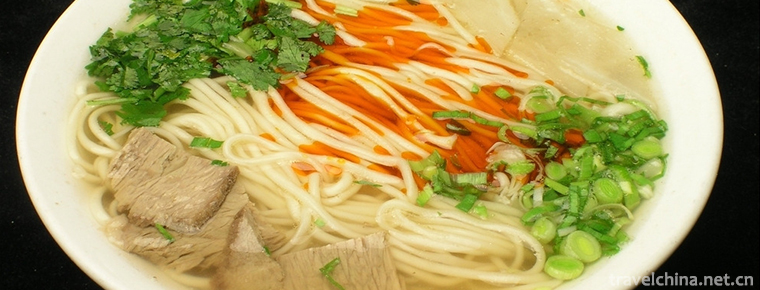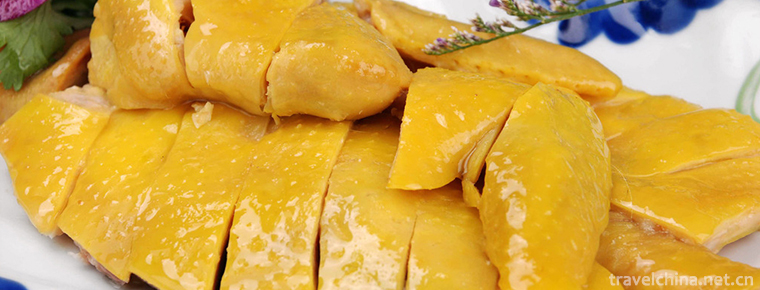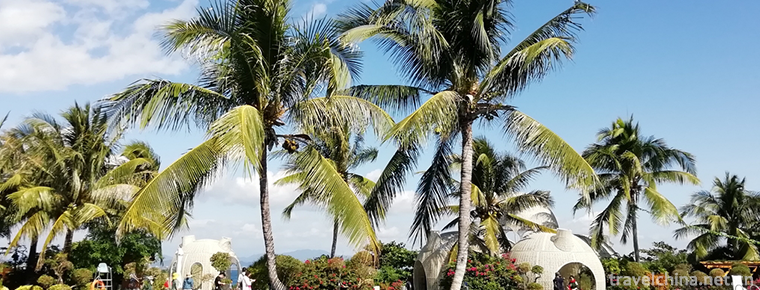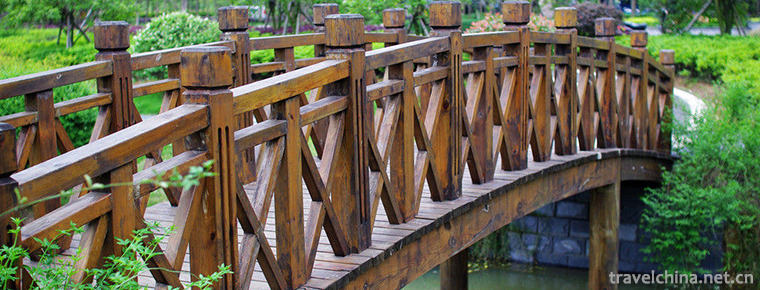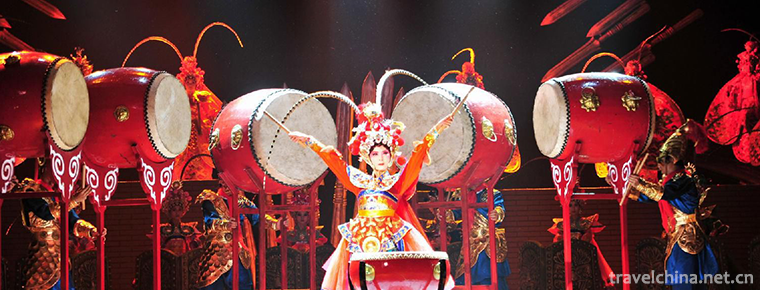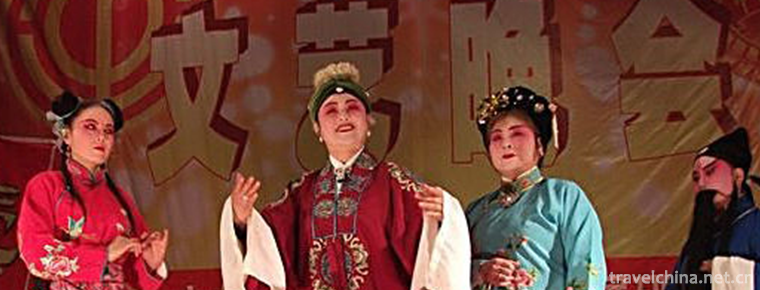Yuchan mountain
Yuchan mountain
Yuchan mountain is located next to Luxian County, Luzhou City, Sichuan Province. It is named for its mountain shape and stone like shape. Yuchan mountain has always been famous in South Sichuan for its secluded mountains, strange stones, beautiful waters and many cultural relics. It was once a famous Buddhist mountain in southern Sichuan, and was praised as the "Pearl of southern Sichuan" by general Zhang Aiping. Yuchan mountain scenic spot is a national AAA tourist attraction, a provincial scenic spot, a provincial forest park and a provincial key cultural relics protection unit.
Yuchan mountain is 548 meters above sea level, with a total area of 52 square kilometers, more than 8000 mu of forest coverage and an average annual temperature of 17.8 ℃. Yuchan mountain is characterized by unique toad culture resources and good forest vegetation for cultural sightseeing and leisure activities.
There are more than 400 Ming Dynasty cliff stone carvings in Yuchan mountain. The larger one is larger, and the smaller one is smaller. The lines are smooth and realistic. Among them, "thousand hand Guanyin", "Jiulong bath Prince", "enlightenment map", "Liuhai playing toad", "Eighteen Arhats floating in the sea" are exquisite and skillful, which can be regarded as fine art works and praised by tourists. The relief of the refugee map, the representative work of famous Chinese painting master Jiang Zhaohe, inspires the patriotic enthusiasm of generations of admirers.
History of development
According to historical records, Yuantong Temple has been built since the second year of Jingfu in Tang Dynasty. Every year, pilgrims and tourists from all over the south of Sichuan gather here to chant sutras, which is unprecedented. Therefore, the jade toad is also known as "xiaobaoding". Today, Yuchan mountain has a brilliant impression. Huang Tingjian, a great writer and calligrapher in the Song Dynasty, left "Yuchan" drunk; Yang Shen, the number one scholar in the new capital of the Ming Dynasty, wrote "Jin Ao Feng" crazily. In the Qing Dynasty, there were many temples on the mountain. In Luohan street, there are one terrace, one hall, one level and one sky; the temples are towering and magnificent. It was once known as "the great monk is fifty-five thousand, and the little monk does not need to be counted.". The evening drum and morning bell are full of cigarettes, pilgrims are like clouds, and the prosperity of Buddhism is amazing.
In the Tongzhi period of Qing Dynasty, a fire destroyed the ancient buildings on the mountain. Today, more than 400 Buddhist stone carvings and Moyan statues on the Yuantong Temple site still attract modern men and women. The stone carvings of the Ming Dynasty, with Buddhist legends and folk stories as the theme, have more than ten feet in size and are less than square feet in size. Among them, thousand handed Avalokitesvara, Jiulong bath prince, wudaotu and eighteen Arhats floating charts are all excellent works of stone carving art.
geographical environment
Yuchan mountain, located 33 kilometers north of Luzhou City, beside Luxian county. It is a national AAA tourist area and a provincial scenic spot. The altitude is 505-548 meters. It is named for its mountain and stone like toad. Yuchan mountain has always been famous in South Sichuan for its secluded mountains, strange stones, beautiful waters and many cultural relics. It is known as the "Pearl of southern Sichuan" by general Zhang Aiping. Since the second year of Jingfu in Tang Dynasty (893), it has been a famous resort in southern Sichuan. The ancient Yuchan pass is one of the important passes in the post road of ancient Sichuan Yunnan and Sichuan Guizhou. Talin is composed of more than 20 stone towers (buoys) from the Tang Dynasty to the Qing Dynasty.
Humanistic value
There are more than 400 stone carvings in the Ming Dynasty in Yuchan mountain, a key cultural relic protection unit in Sichuan Province. There are more than 400 stone carvings in the Ming Dynasty, including Sakyamuni, Qianshou Guanyin, wudaotu, Liuhai playing toad, Jiulong bath prince, eighteen Arhats floating on the sea, Shuo Tu, etc. There are stone inscriptions such as Xu xuanshu of Five Dynasties, Huang Tingjian's book of Song Dynasty and jade toad of Song Dynasty, Yang Shen's book of Ming Dynasty and jade toad Congcui of Qing Dynasty, all of which have high artistic value.
Yuchan mountain is famous for its secluded mountains and rare stones. It has a myriad of features and trees, and it is close to Emei.
Features of scenic spots
Yuchan mountain scenic area is located near Luxian County, 33 kilometers away from Luzhou city. It is a national AAA tourist area, a cultural relic protection unit in Sichuan Province, a provincial scenic spot and a provincial forest park. The altitude is 548 meters, the forest coverage area is more than 8000 mu, the planning area of the scenic area is 49 square kilometers, and the annual average temperature is 17.8 ℃. There are Jiuqu River, Laixi River and Maxi river at the foot of the mountain. The main scenic spots include longnao bridge, ancient Yuchan pass, relief of refugee map, Mituo temple, Longpan temple, baiyun temple, Jinbaoshan ancient tomb group, etc., with a planning area of 52.8 square kilometers. There are more than 5400 mu of forest area. Yuchan mountain is famous for its secluded mountains and strange stones. It has a myriad of looks and beautiful trees, which are close to Emei. It is named for its mountain and stone like toad. There are many grotesque rocks in Yuchan mountain. The cliff statues with thousand hands Guanyin as the core are exquisite Buddhist cliff statues carved by skilled craftsmen of all ages. There are more than 400 cliff carvings in the Ming Dynasty. The largest one is larger than the foot, and the lower one is less than one foot. The lines are smooth and lifelike. Among them, "thousand handed Guanyin", "Jiulong bath Prince", "wudaotu", "Liuhai playing toad", "Eighteen Arhats floating in the sea", etc. are exquisite, skilled and natural in shape, which can be regarded as fine arts, and visitors are always praising their exquisite carving art. The relief of the refugee map, the representative work of the famous Chinese painting master Jiang Zhaohe, also inspires the patriotic enthusiasm of generations of admirers. According to incomplete statistics, there are more than 240 kinds of trees in Yuchan mountain, including Ginkgo biloba, Zhennan, red bean, metasequoia, vigorous and straight American slash pine and loblolly pine; the leaves are like Mandarin coat and white goose's paw; today's Yuchan mountain is green and green. There are more than 20 species of birds in the forest on the mountain, such as cuckoo, thrush, crow, turtledove, and Pulsatilla. They are forest guards. In Yuchan mountain scenic area, there are many places of interest. The longnao bridge on the Jiuqu River at the foot of the mountain is a stone flat bridge built in the Hongwu Period of the Ming Dynasty. Its piers are composed of stone dragon, Qilin, green lion and white elephant. Its exquisite workmanship can be regarded as a rare treasure. In 1996, Luxian County moved to Fuji Town, that is to say, Yuchan scenic spot construction as the leader to actively develop tourism. There is a cement road leading directly to the Yuchan mountainside, and the mountain road leads to every scenic spot. A group of large relief sculptures created by the famous Chinese painting master Jiang Zhaohe's "refugee Pavilion" have settled in Yuchan mountain, adding new charm to the ancient jade toad.
The origin of mountain name
"The mountains are like the min'e sect, and the peaks are like jagged peaks. Xianyou also resident crane, monk also habitat toad. The moon is hanging in the sky, and the pine wind blows at the toad. There is a poem that breaks off the scabby wall, and Kuteng Tim is the only one. " This is a poem of yangsheng'an, the number one scholar in Sichuan and a famous poet in Ming Dynasty, praising Yuchan mountain. Yuchan mountain is located 35 kilometers south of Luzhou City, Sichuan Province, with undulating peaks and lush trees. It is named after the shape of mountains and rocks that are more like toads. One day, Huang Tingjian, a famous writer and calligrapher of the Song Dynasty, visited Yuchan mountain in admiration of his name. He was intoxicated by the scenery of the mountains and waters. In particular, many toads paid homage to him, which made him happy and lingered on. The old abbot of Yuantong Temple on the mountain had heard about Huang Tingjian for a long time, so he welcomed him into the temple and offered jade toad tea and jade toad wine. While drinking tea, he talked about jade toad stone in the mountain. Seeing Huang Tingjian talking and laughing, the old host was very excited, so he asked the monks to put on the four treasures of the study and asked Huang Tingjian to inscribe the calligraphy. Huang Tingjian readily agreed and wrote two simple and vigorous characters "jade toad". Due to Huang Tingjian's drunken pen, he wrote a little of the word "Yu" on it, leaving a good story about "drunken Yuchan". Later, the monks engraved the word "Yuchan" on the cliff and renamed Yuantong Temple "Yuchan Temple". The Mo Yan statue in Ming Dynasty can be regarded as one of the unique jade toad mountains. On the cliff of the main peak of jin'ao peak, there are more than 400 statues of rock rubbing in the Ming Dynasty, such as thousand handed Guanyin, six armed Guanyin and liantai Guanyin. The larger one is more than ten meters, and the smaller one is not enough. The statue is simple and elegant, with smooth lines, delicate carving, symmetrical proportion, lifelike and lifelike. Among them, the composition of the painting of enlightenment is unique and thought-provoking: under the whirling bodhi tree, a believer sits with his face on his knee and meditates deeply, giving people a sense of Zen.
Main attractions
Thousand-hand Bodhisattva
Qianshou Guanyin is a time of the Ming Dynasty. The stone carvings of the Ming Dynasty have a history of more than 600 years, and the well preserved stone carvings are rare in the whole country. There are more than 400 stone carvings in Yuchan. The statue is 5.6 meters high and 3.5 meters wide. It has 11 heads, 36 arms, and thousands of hands, which are densely covered with thousands of hands. Besides, there are eyes on the thousand hands, just like a peacock opening the screen. Thousand hands means boundless power, thousand eyes, and infinite insight. Every year, the worshippers from southern Sichuan come here to worship.
Refugee map
Yuchan mountain is intoxicated with its beautiful scenery and many places of interest. Moreover, it attracts Chinese and foreign tourists with the large-scale stone carving relief "refugee map" on the stone wall of jin'ao peak. The relief sculpture of a large-scale figure on the stone wall of jin'ao peak in Yuchan mountain is a newly engraved scenic spot. This group of stone reliefs were made according to the "refugee map" by Mr. Jiang Zhaohe. The stone relief work was started in July 1987 and completed in April 1989. The relief is 45 meters in length and 3 meters in height. With more than 100 characters, the picture comprehensively shows the tragic scene of the people in dire need of a living under the iron hoof of the Japanese aggressors.
Jiang Zhaohe's "refugee map" was created in the enemy occupied Beiping during the Anti Japanese war in 1943. The original picture is 27 meters long and 2 meters high. At that time, Mr. Jiang Zhaohe lived in Peiping and witnessed the tragic scene brought about by the Japanese aggressors to the Chinese nation. The cruel reality shook his heart. So he angrily took up his brush and filled his blood and tears to create the "refugee map".
Looking from right to left, we can see the silence of the endangered old people, the lamentation of the peasants who have left their hometown, the indignation of the young peasants with hoes in their hands, the pyramidal barrier built by mother and son who escaped from enemy aircraft bombing, the bones lying horizontally under the broken wall, the call of children begging along the street, the hard walking of the unemployed and injured workers, the women driven crazy, the old people who want to hang themselves, and they are unable to support them Finally, two intellectuals are looking forward to the dawn of the recovery of the motherland This painting volume is not only with its historical theme, but also with its exquisite artistic expression of combining Chinese painting and Western painting realistic skills, and with its in-depth depiction of the inner world of the characters, it has become a great picture in the history of modern Chinese figure painting.
When I visited Yuchan mountain and saw the large stone relief painting of refugees, I not only experienced the beautiful natural scenery, but also received profound patriotic education. Touching the scene, he wrote a poem: "the historical giant painting engraved on the cliff, the tragic scene is startling. The jade toad carries the refugee map forever, remembers the Anti Japanese patriotism.
Tourism information
Best travel season
Yuchan mountain is mainly a manifestation of Buddhist culture. Every year, February 19 is the busiest day in the scenic spot. Almost all the residents around the city go out to burn incense and worship Buddha for their families in order to be safe, This traditional festival has not changed for decades in the local area, so when you travel during this period, you can not only enjoy the warm spring and flowers, but also appreciate the local people's worship of Buddhism. Besides, you can also repose a piety for your family.
Transportation and accommodation
It is 20km away from Luzhou Yunlong airport, the third largest airport in Sichuan Province (within Yunlong Town of Luxian county), 10km away from Luxian station of South Sichuan Intercity Railway (from inner Luzhou section), 1km from Fuji station of longhuang railway, 4km away from Longna expressway, 15km from Chengdu zigzaghi Expressway and 35km from Luzhou Chongqing Expressway.
The valuable sightseeing of Yuchan mountain is mainly located at the top of the mountain. There is a winding mountain road from the foot of the mountain to the top of the mountain, about 4 meters. There is no bifurcation point in the middle of the road. The road surface is steep. You can walk about 40 minutes. You can call a motorcycle at the foot of the mountain. You can get to the top of the mountain in 10 minutes. The maximum cost is 10 yuan.
The mountain waist is a high-level hotel integrating entertainment, leisure and accommodation, which provides visitors with the convenience of watching the night of Yuchan.

-
Rabbit head
Rabbit head is a traditional snack in Sichuan Chengdu, Shanxi Datong and Zhejiang Quzhou. .
Views: 224 Time 2018-10-13 -
Water surface
The water surface is a traditional snack in Shaanxi and Gansu Province. Legend has it that Liu Bang, the ancestor of the Han Dynasty.
Views: 498 Time 2018-11-02 -
White cut chicken
White cut chicken, also known as white cut chicken, is the most common dish in Guangdong cuisine. It is a kind of chicken dipping. Its characteristics are simple and easy to prepare, without batching .
Views: 231 Time 2018-11-02 -
Daqing Oilfield History Exhibition Hall
Daqing Oilfield History Exhibition Hall is the first original Memorial Hall in China with the theme of petroleum industry, and it is a cultural relic protection unit in Heilongjiang Province. .
Views: 155 Time 2019-01-07 -
Wuzhizhou Island Scenic Area
Wuzhizhou Island is situated in Haitangwan Bay in the north of Sanya City. It is opposite to Monkey Island in the South and is adjacent to Yalong Bay.
Views: 372 Time 2019-02-24 -
Hebei Bangzi
Hebei Bangzi is an important branch of Bangzi vocal cavity in China. It was formed in the Qing Dynasty (1821 - 1850), and entered a prosperous period in the early years of Qing Guangxu.
Views: 160 Time 2019-05-02 -
Traditional Building Techniques of Wood Arch Bridge
The traditional construction techniques of Chinese wooden arch bridges mainly include site selection, abutment construction, level measurement, arch erection, upper scissors seedling, instant leg erec.
Views: 216 Time 2019-06-06 -
Bangkok in Puzhou
Bangzi of Puzhou is named for its origin in ancient Puzhou. Jinzhong and Northern Shanxi are called "Bangzi on the South Road" or "Bangzi Opera on the South Road", Shangdang is cal.
Views: 117 Time 2019-06-09 -
Xihe Opera
Xihe Opera, also known as Xingzi Xihe Opera, is a traditional opera popular in Xingzi, De'an and Jiujiang counties and cities of Jiangxi Province. Its main vocal cavity is Pihuang, also known as ".
Views: 123 Time 2019-07-01 -
Borneol Bridge
Luxian county is the "hometown of dragon culture" and "the hometown of Longqiao" in China. There are hundreds of ancient Longqiao bridges in the Ming and Qing Dynasties in Luxian County, which is the largest group of Longqiao in China and even in the world..
Views: 143 Time 2020-10-16 -
Chengdu national beauty and heavenly fragrance Water Park
Chengdu national beauty and heavenly fragrance water park is the world's first and largest standard in Asia. It is also the first water theme park with the most comprehensive facilities in Southwest China..
Views: 147 Time 2020-10-17 -
Daofu steamed bun with beef and mutton
Steamed bun with beef and mutton is a special traditional delicious food of Hui nationality. It is famous at home and abroad for its strict selection of materials, cooking essence, rich nutrition and mellow taste. The eating method of beef and mutton steamed .
Views: 348 Time 2020-12-06
